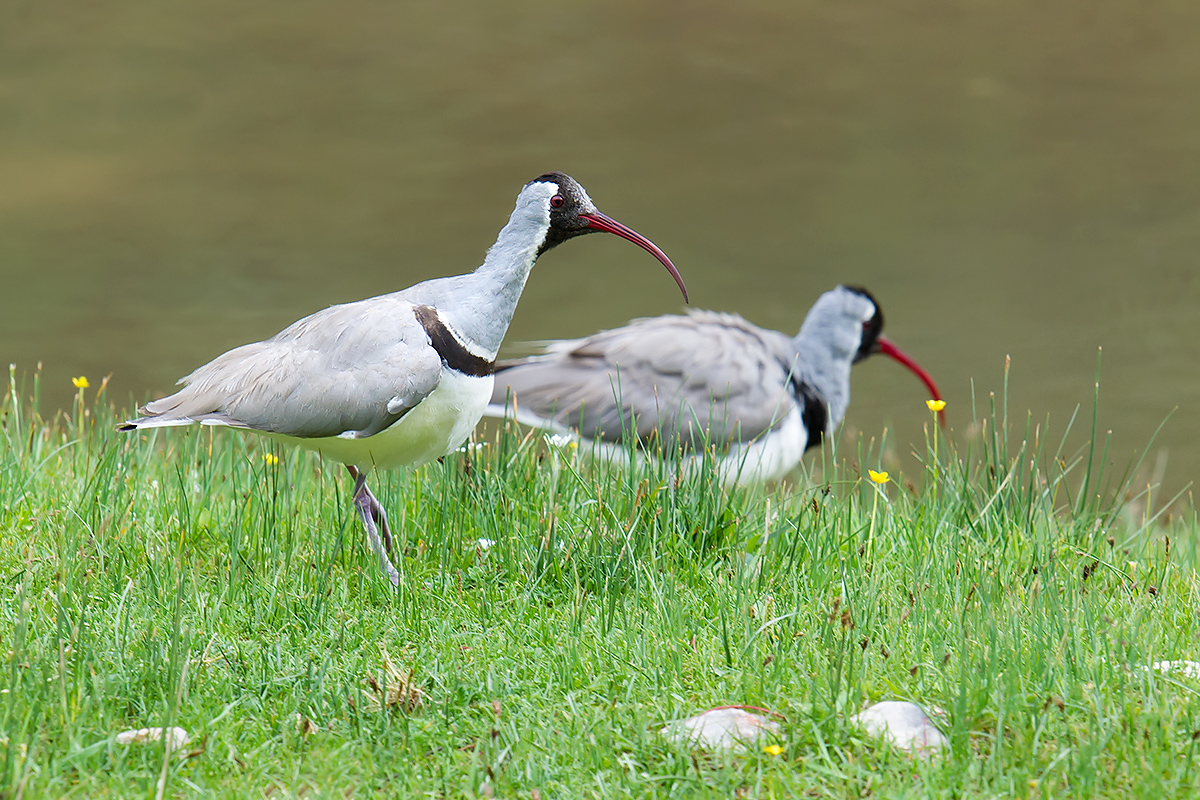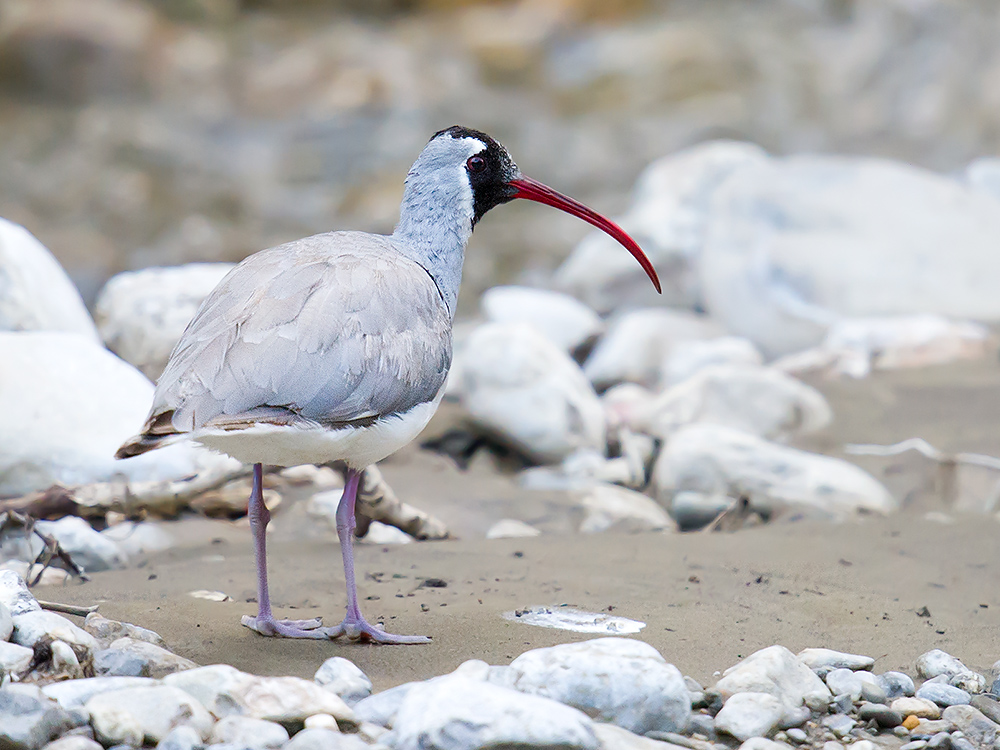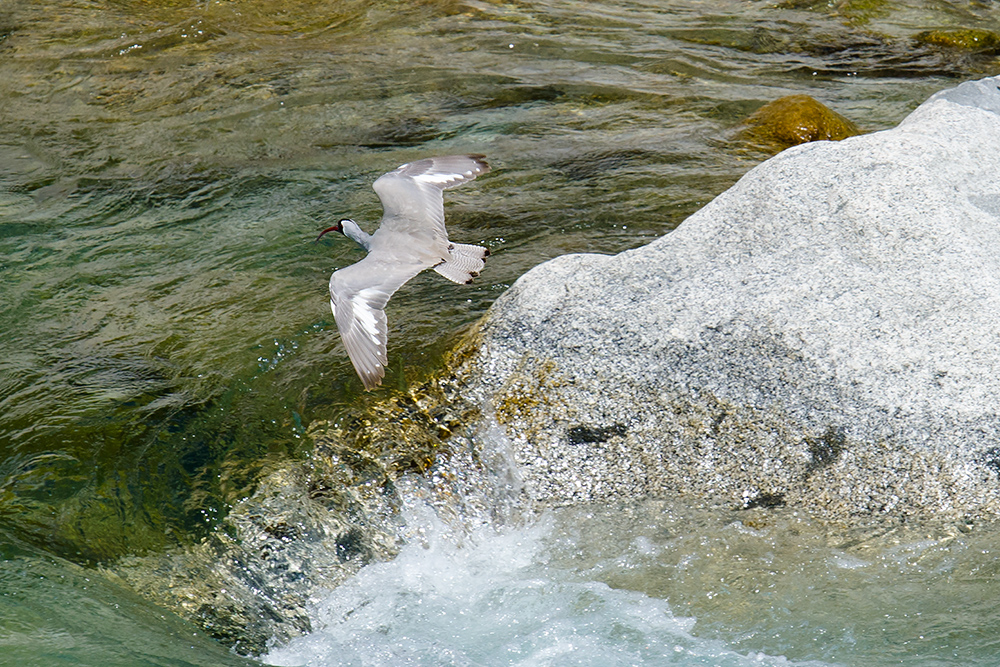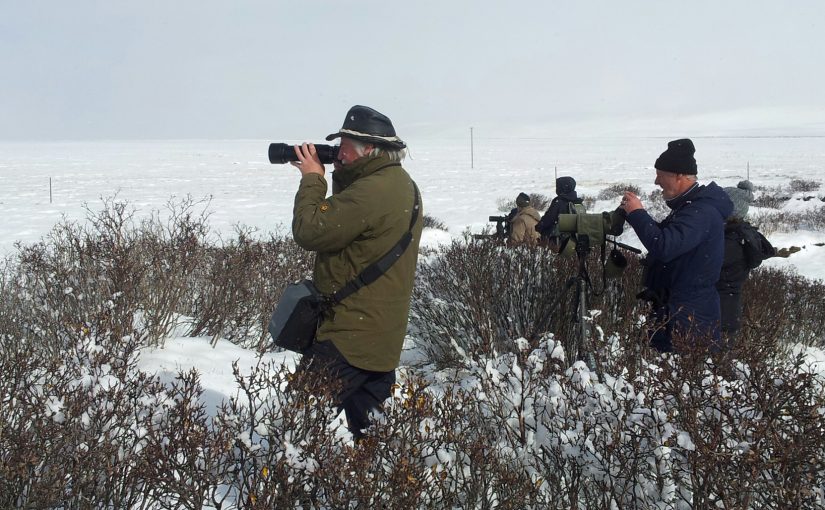by Jesper Hornskov
for shanghaibirding.com
P Benstead (Greentours), P Annesley, L Fitch, B and M Griffin, N Haggart, H Kloser, K Little, P Pilbeam, D Spencer and I visited NE Tibet, China’s Qinghai province, 7–23 Oct 2019.
It was the 6th Greentours mammal-watching trip in this area; the first was in October 2012. Our trip aimed to see as many of the unique mammals of the Tibetan highlands as we could, but in the field searching for mammals typically allows one plenty of time to record birds as well, and it is hopefully of interest what we saw at a time of the year when few dedicated birdwatchers visit this unique land. Predictably, the relatively late dates meant that some breeders had already departed for their winter quarters, and the bulk of the Siberian passage migrants, notably waders, had gone through. No matter: pretty much all the key birds are residents, and the lateness of the season has its potential advantages—we saw some of the specialities better and/or in far greater numbers than we would have in summer, and as a bonus turned up a few surprises. We recorded 178 spp of bird and no fewer than 27 species of mammal, incl Tsingling Pika Ochotona huangensis, Pallas’s Cat Felis manul, Lynx Lynx lynx, Snow Leopard Uncia uncial, Wolf Canis lupus (21 individuals!), Tibetan Fox Vulpes ferrilata, Mountain Weasel Mustela altaica, Kiang (= Tibetan Wild Ass) Equus kiang, Wild Boar Sus scrofa (a range extension!), Alpine Musk Deer Moschus chrysogaster, White-lipped Deer Przewalskium albirostris in full rut, the ultra-rare Przevalski’s Gazelle Procapra przewalskii, Wild Yak Bos grunniens, Argali Ovis ammon, Tibetan Antelope Panthalops hodgsonii, and Blue Sheep Pseudois nayaur.
Among the highlights/my personal favourites/most interesting records were:
Szechenyi’s Monal-Partridge Tetraophasis szechenyi
18+ bird-days. Noted on three dates near Nangqian—undeterred by a thin layer of new snow on the ground, five gave the full territorial call as they left roost and started feeding under a juniper as we kept our scopes on them …
Tibetan Snowcock Tetraogallus tibetanus
19 bird-days. Noted on two dates near Nangqian—three swooped down landing next to a large herd of Blue Sheep, slightly startling some of them: eventually there were five, but soon they became very hard to keep track of as the snow melted fast.
Tibetan Partridge Perdix hodgsoniae
c100 bird-days. Noted on at least three dates—photographed at absurdly close range as some subtle driving turned our trusty 4WDs into mobile hides …
Blood Pheasant Ithaginis cruentus
A covey of no fewer than 24 scoped out on a bare slope near Nangqian on 16th.
White Eared Pheasant Crossoptilon crossoptilon
470 bird-days. Noted near Nangqian on three dates, incl a shocking 355 in a day!
Blue Eared Pheasant Crossoptilon auritum
A languidly feeding covey of 16 did their best to distract us from the sight of a full stag Siberian Roe Deer Capreolus pygargus near Xining on 8th.
Saker Falco cherrug
63 bird-days. Noted on eight dates. For most of us a welcome opportunity to familiarize ourselves with a species which is declining globally: not many two-week trips allow you to take such giant strides towards full Saker Expert status!
Lammergeier Gypaetus barbatus
35 bird-days. We recorded this “flying dragon” on 11 dates—eh, hang on, “recorded”? We were just BLOWN AWAY by some the views we got: TINGALING!!
Northern Goshawk Accipiter gentilis
Seven bird-days. Noted on four dates—not a local speciality, granted, but typically a species hard to get prolonged looks at …
Steppe Eagle Aquila nipalensis
Just three bird-days! At what was in the very recent past a perfect time of the year for it, only single individuals of this suddenly “Endangered”-listed species were noted on no more than three dates.
Black-necked Crane Grus nigricollis
46 bird-days. Noted on six dates. Widespread overgrazing—of hills and wetlands alike—is bound to be spelling trouble for this emblematic species, and as in 2018 we were dismayed to find only around 10 present at a large wetland near Yushu on 17th: we’d counted 40 there on 11 Oct 2014, and 26 on 11 Oct 2015. Nonetheless our repeated sightings—incl two adults giving their single juvenile a dance lesson on 9th, pretty much as soon as we set foot on the Plateau—was a cheering sight … and of course delighted our photographers!
Ibisbill Ibidorhyncha struthersii
24 bird-days. Noted on three dates—although our trip prioritized mammals, all present enjoyed taking time to watch a gathering of no fewer than nine of this enigmatic, monotypic family creature en route on 12th.
Solitary Snipe Gallinago solitaria
A single individual was seen up close at Nine Ibisbills Spot on 12th!
Pallas’s Sandgrouse Syrrhaptes paradoxus
A single distant flock of 38 was all we managed …
Eurasian Eagle-Owl Bubo bubo ssp
One scoped in desert poplars on 22nd—its presence outraged the resident pair of Eurasian Kestrel Falco tinnunculus.
Grey Nightjar Caprimulgus jokata
One along the Mekong on 16th.
Tibetan Grey Shrike Lanius giganteus
Singles were noted on two dates. IOC (2019) is finally poised to join the rest of us in accepting giganteus as a full species: “Tibetan Grey (or Giant) Shrike” L. giganteus may be split from Chinese Grey Shrike (Svensson et al. 2009, Olsson et al. 2010, Panov et al. 2011); await improved resolution of this complex. Zheng et al. (2011) list this taxon only for “E Qinghai, NE Xizang, N and W Sichuan.”
White-browed Tit Poecile superciliosus
14 bird-days. Noted on six dates—superb views of this highly specialized and very pretty species. Zheng et al. (2011) listed the species for only “S Gansu, S Xizang, E Qinghai, and N and W Sichuan.”
Bearded Tit Panurus biarmicus
69+ bird-days. A monotypic family species, these supremely attractive birds were very much in evidence at Koko Nor and in the Qaidam, with groups taking off suggesting an irruption in progress—42 in a morning near Golmud!
Mongolian Lark Melanocorypha mongolica
11 were noted on 22nd. Listed as “Least Concern” (https://www.iucnredlist.org/species/22717295/94526964), but a popular cage bird in China, and juveniles are collected from nests, very likely at least locally in unsustainable numbers.
Tarim Babbler Rhopophilus albosuperciliaris
Eight near Golmud on 20th—a sunny, calm morning (one of many we enjoyed) encouraged pairs of these often skulky birds to sit right out atop desert thornbushes, allowing scope viewing.
Kozlov’s Babax Babax koslowi
26+ bird-days. Recorded only near Nangqian—best of all was a presumed family of six … “[The species] is known by just a few scattered records in this inaccessible and poorly known area, but it appears to be genuinely rather scarce and localised” (https://www.iucnredlist.org/species/22716515/94497919#geographic-range).
Chinese Fulvetta Alcippe striaticollis
No fewer than 18—many of them seen extremely well—in forest S of Nangqian on 14th. Now listed as a sylviid babbler by IOC (https://www.worldbirdnames.org/bow/sylvias/), away from the Alcippe fulvettas (https://www.worldbirdnames.org/bow/babblers/). Zheng et al. (2011) listed its range as “S Gansu, SE and E Xizang, SE Qinghai, NW Yunnan and W Sichuan,” and the commonly accepted English name is thus somewhat misleading.
Przevalski’s Redstart Phoenicurus alashanicus
Five bird-days. Noted on two dates—three fairly obliging males w/ a female in a plantation on the S edge of the Qiadam on 20th did not quite do the photo op posing that we’d hoped for but did allow long scope views as they fed out in the afternoon sun.
Henri’s Snowfinch Montifringilla henrici
A feeding flock of 550 strung out across the slope at Er La: a very fine sight, and possibly the largest gathering ever recorded …
Alpine Accentor Prunella collaris
Seven bird-days. Noted on two dates near Nangqian—unexpected due to the lateness of the season: the extended scope views we had were enjoyed all the more.
Przevalski’s Finch Urocynchramus pylzowi
A flighty gathering of 15-20 found on 11th (once we’d finished watching and photographing a lone wolf!) incl several males sitting up for photos. Przevalski’s Finch is a not-to-be-taken-for-granted bird which has something to offer no matter what subspecies of birder you are: beauty, interesting behavior (notably its parachute type song-flight), odd song, as well as taxonomic interest (it has for some years now been known to represent a monotypic family). We have noted this species at no fewer than 12 sites!
Red-fronted Rosefinch Carpodacus punicea
Four bird-days. Unexpectedly—due to the lateness of the season—noted near Nangqian on three dates.
Pine Bunting Emberiza leucocephalos
26+ leaving roost, squabbling and flighty, taking turns to sit up nicely (but rarely for long!), near Dulan on 21st—at this season you’d normally be delighted to see one or two!
The supporting cast included Severtov’s Grouse Tetrastes severtzovi, Przevalski’s Alectoris magna and Daurian Partridge Perdix dauurica, Bar-headed Goose Anser indicus, Chinese Spotbill Anas zonorhyncha, Black Stork Ciconia nigra, Chinese Pond Heron Ardeola bacchus, Merlin Falco columbarius, Oriental Honey Buzzard Pernis ptilorhynchus, Black Vulture Aegypius monachus, Western Marsh Harrier Circus aeruginosus, Himalayan and Upland Buzzard Buteo burmanicus and B. hemilasius, Eastern Imperial Eagle Aquila heliaca, Demoiselle Crane Anthropoides virgo, Eurasian Woodcock Scolopax rusticola, Great Black-headed (= Pallas’s) and Brown-headed Gull Larus ichtyaetus and L. brunnicephalus, Snow Pigeon Columba leuconota, Chinese Pied Woodpecker Dendrocopus cabanisi, Chinese Grey Shrike Lanius sphenocercus, Henderson’s Ground Jay Podoces hendersoni, Hume’s Groundpecker Pseudopodoces humilis, Sichuan Tit Poecile weigoldicus, Asian House Martin Delichon dasypus, Stoliczka’s Tit-warbler Leptopoecile sophiae, Elwe’s Horned Lark Eremophila elwesi, Gansu Leaf Warbler Phylloscopus kansuensis, Giant Laughingthrush Garrulax maximus, Chinese Nuthatch Sitta villosa, Hodgson’s Treecreeper Certhia hodgsoni, Kessler’s Thrush Turdus kessleri, Northern Red-Flanked Bluetail Tarsiger cyanurus, White-throated Redstart Phoenicurus schisticeps, Tibetan Montifringilla adamsi, White-rumped Onychostruthus taczanowskii, and Rufous-necked and Blanford’s Snowfinch Pyrgilauda ruficollis and P. blanfordi, Robin, Rufous-browed, and Brown Accentor Prunella rubeculoides, P. strophiata and P. fulvescens, Citrine Wagtail Motacilla citreola, Brandt’s Mountain Finch Leucosticte brandti, Pink-rumped, Chinese White-browed, Eastern Great and Caucasian Great Rosefinch Carpodacus waltoni, C. dubius, C. rubicilloides and C. rubicilla, White-winged Grosbeak Mycerobas carniceps, and Godlewski’s and Little Bunting Emberiza godlewskii and E. pusilla.
Want more information on mammal- and bird-watching in Qinghai? Reach me at enquiries@greentours.co.uk. Good birding!
PHOTOS
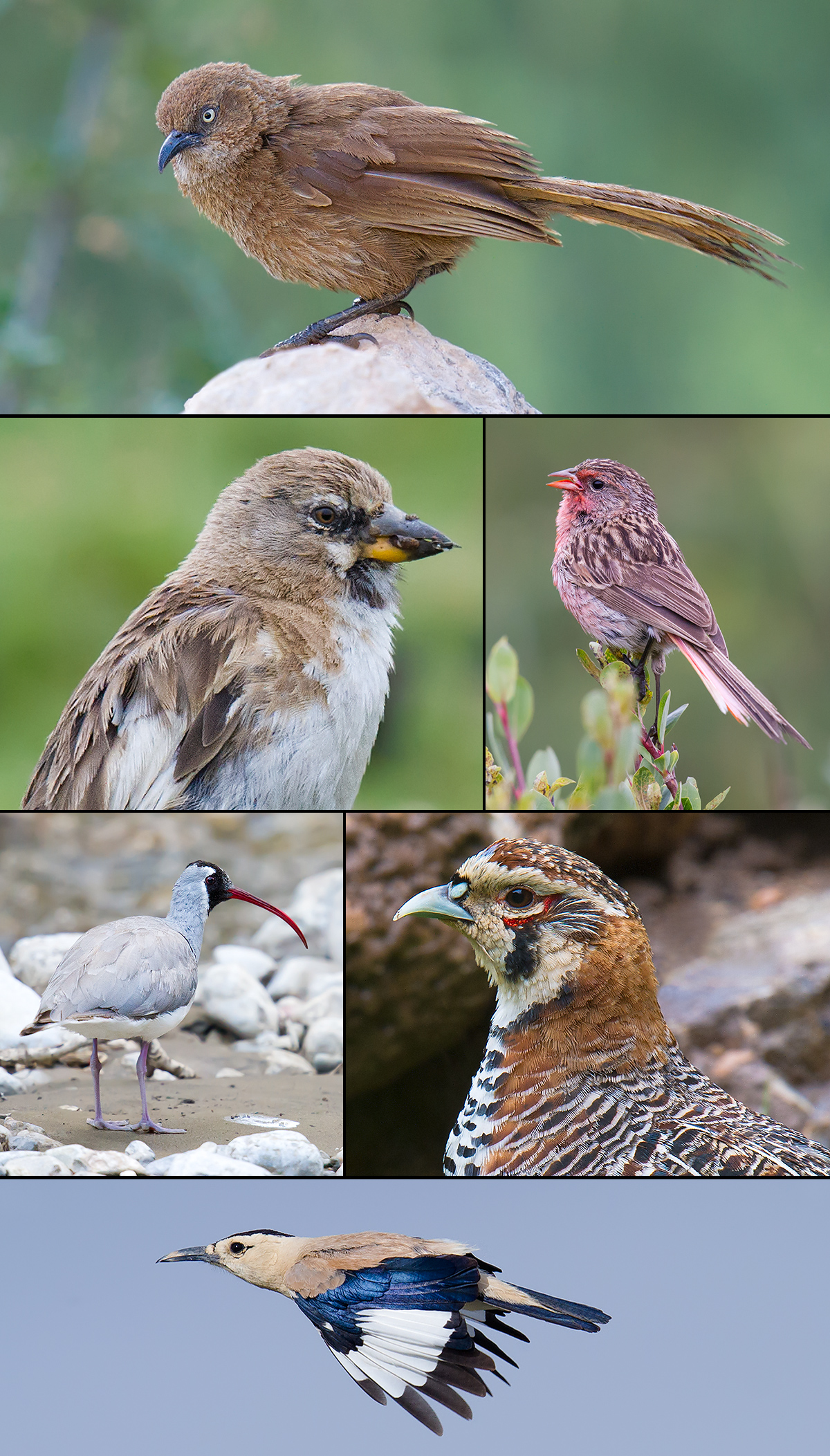
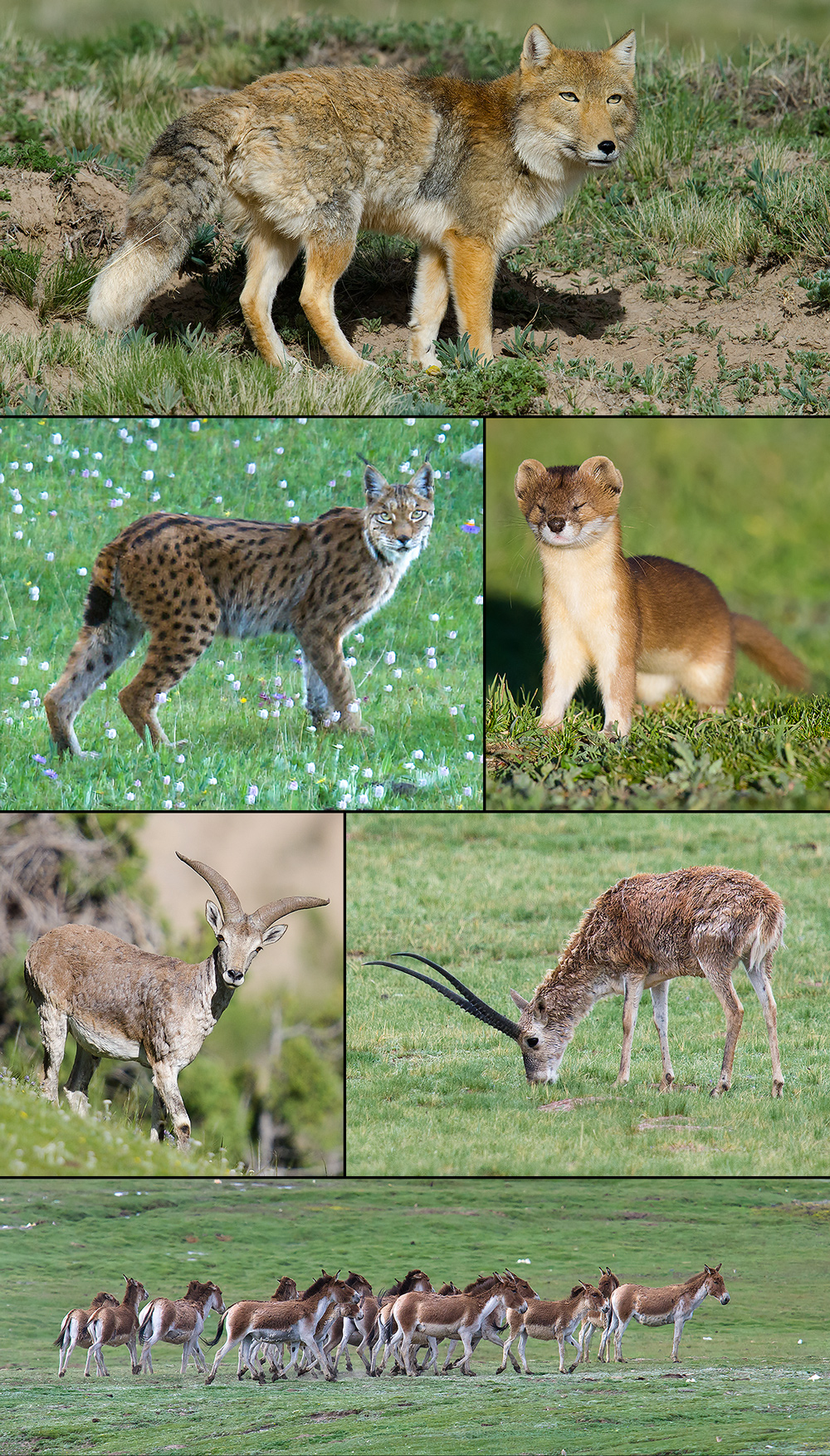
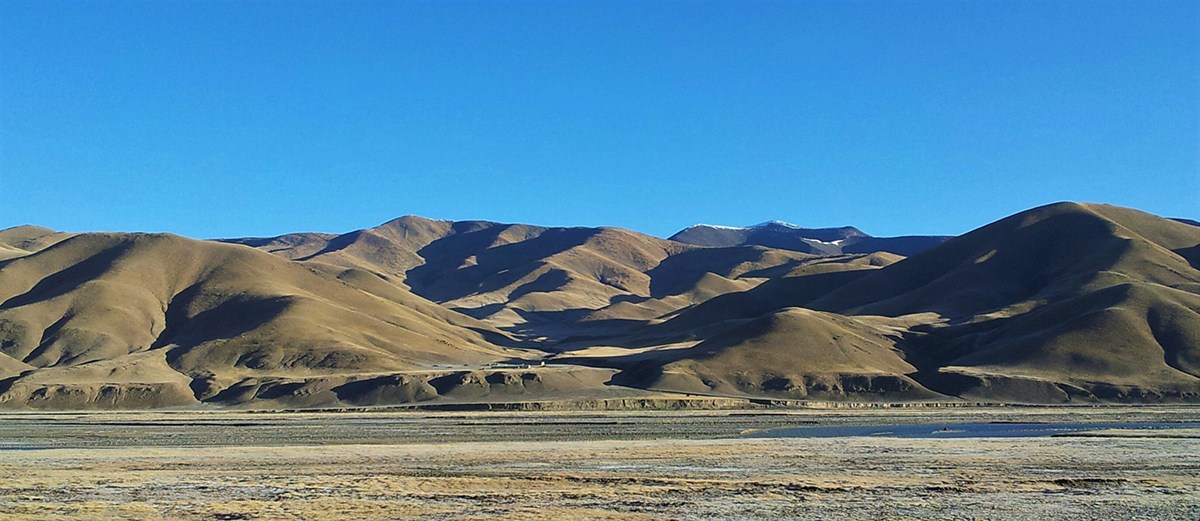
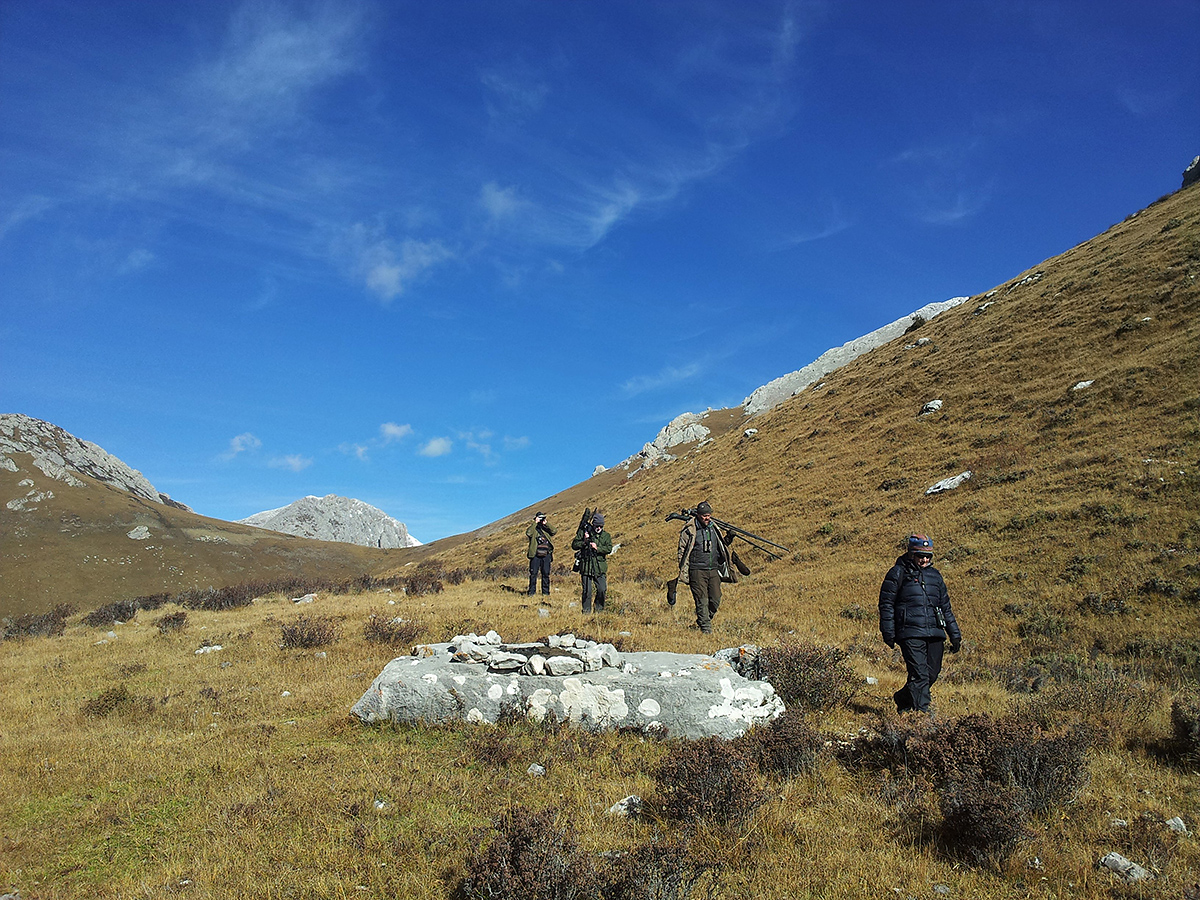

MORE POSTS ON QINGHAI
shanghaibirding.com offers unparalleled coverage of birding in Qinghai. Below is an index to our posts on Qinghai. Reach us at info@shanghaibirding.com.

Summer-long Birding Expedition to Qinghai (Introduction): We birded Qinghai from June to August, spending the entire summer in the province. We noted classic Tibetan Plateau birds White Eared Pheasant, Black-necked Crane, White-browed Tit, and Przevalski’s Redstart. We explored little-birded northern Qinghai, discovering new locations for Przevalski’s Partridge, Tibetan Sandgrouse, and Gansu Leaf Warbler.
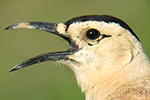
Birding Eastern Qinghai, from the Border with Gansu to the Border with Tibet: We spent the first two weeks of the expedition covering eastern Qinghai, from the Gansu border in northeast Qinghai to Ga’er Monastery on the border with Tibet. We had Henderson’s Ground Jay west of Chaka, Ibisbill on tributaries of the Mekong River, White-browed Tit in scrub along the G109, and Güldenstädt’s Redstart breeding near Qinghai Lake.

Birding Qinghai’s Eastern Yushu Prefecture: We found Tibetan Lynx in the Kanda Mountains, discovered new birding sites, and at an art school in the wilderness immersed ourselves in Tibetan Buddhist culture. Among our highlights were Grandala and Red-fronted Rosefinch, the highest-breeding bird in the Palearctic. Our mammals included White-lipped Deer and Mongolian Five-toed Jerboa, and we saw evidence of attacks by Brown Bear.
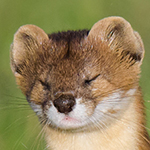
Birding the Qilian Mountains of Northern Qinghai: Our most important discovery was the poplar forests along the Heihe and Babao rivers, where we encountered woodland species Gansu Leaf Warbler and Chinese Thrush. Conifer forests yielded Black Woodpecker, and the scrub and pastureland gave us Eurasian Eagle-Owl, Siberian Roe Deer, and Mountain Weasel.
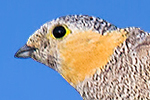
Forbidding (and Forbidden) Hala Lake: Defying a ban on foreigners, we birded the wild, remote inland sea in north-central Qinghai, elev. 4077 m (13,376 ft.). The lake yielded several interesting Qinghai records, among them Little Stint, Curlew Sandpiper, and Eurasian Whimbrel. Near shore, in perfect semi-desert habitat, we discovered flocks of Tibetan Sandgrouse.
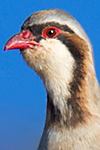
Birding the Remote Backcountry of Wulan County, Qinghai: Amid stunning scenery, we found Tibetan Wolf, discovered a new location for Przevalski’s Partridge, and around Lake Xiligou had Qinghai favorites Black-necked Crane and Tibetan Lark. The lake held a noisy super-flock of 4,600 Ruddy Shelduck, and Mongolian Goitered Gazelle were in the hills behind. Near Chaka we had Mute Swan.
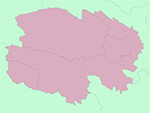
Index to Place Names in Qinghai: Study this list and plan your trip to Qinghai, the most exciting province for birding in China. We offer fascinating facts on famous places as well as sites little known, all with geographic coordinates. Read also our bibliography and use our index of eBird lists from the summer-long expedition.
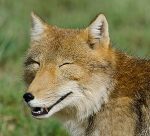
Mammals and Birds of the Tibetan Plateau: Our team drove 3977 km (2,471 mi.) in 15 days, starting and ending in Golmud, Qinghai. In mountains as high as 5100 m (16,730 ft.), we found 98 species of bird. Mammals were the big stars. I watched a Tibetan Fox catch and devour a vole, we found 46 Tibetan Antelope and a Tibetan Wolf in Antelope Valley, and we saw dozens of Tibetan Wild Ass.
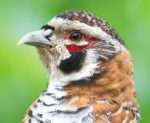
Tibetan Bunting Leads Parade of Tibetan Plateau Endemics in Qinghai: shanghaibirding.com founder Craig Brelsford led a three-person team on a 23-day trip to Qinghai. We covered most of the Tibetans (Tibetan Snowcock, Tibetan Partridge, Tibetan Babax, Tibetan Rosefinch, and Tibetan Bunting) and found Przevalski’s Finch near Qinghai Lake.
Qinghai in the Age of Covid: Covid-19 complicated the trip, but watching Tibetan Wolf pups frolic made all the trouble worthwhile. We sampled a wide array of western China birds, among them Daurian Partridge, Pallas’s Sandgrouse, and White-winged Grosbeak.
In addition to coverage of Qinghai and our core area of Shanghai, shanghaibirding.com has extensive coverage of other areas of China, among them
Fujian
Northeast China
Sichuan
Xinjiang
Yunnan
Featured image: Wildlife watchers scan the snowy landscape during a tour in October of Qinghai. (Jesper Hornskov)

